Text
Feminist Critique
Time to get academic here. I am going to use an academic text to analyze the foundation of these characters. The text I am going to be taking apart is famed feminist writer, Judith Butler’s Gender Trouble. Butler writes, “The female body is marked within masculine discourse” (Butler 12). That couldn’t be more true when it comes to this film. The female body is an eroticized and sexualized image branded for the admiration of the heterosexual male. Of course, there is nothing wrong with a woman showing off her body. However, what Sin City misses is the chance of developing their characters beyond their attractiveness. Lucille and Nancy barely had any any significant character development and Miho is a walking stereotype (badass, nonetheless). I’m one of the those people who feel like female characters can be attractive and strong. That’s also not to say that Sin City isn’t an amazing film. I loved it upon watching it. However, it could have been better if the above women had more a character development.
The second quote that I found interesting is: “The masculine/feminine binary constitutes not only the exclusive framework in which that specificity can be recognized but in every other way the “specificity” of the feminine is once again fully decontextualized and separated off analytically and politically from the constitution of class, race, ethnicity, and other axes of power relations that both constitute “identity” and make the singular notion of identity a misnomer” (Butler 4). I have noticed that the way a few of the characters are formulated speaks on the binaries through ethnicity and class. Miho and Gail, the two women of color in this film, are tougher and more self sufficient than some of the white characters of the film, Nancy and Shellie, respectively. Miho, especially, is what Hollywood defines an Asian woman. She’s beautiful and masterly trained in martial arts. Gail, an African American woman, is tough, strong, and dominating. They are at the same level of men in terms of combat. Shellie and Nancy, the girls-next-door, are a bit weaker and needed their male significant others to save them. They are the victims in their story. As explained before, all the girls (with the exception of Lucille), are in the sex industry. The prostitutes of O-Town (Gail and Miho’s group), fend for themselves in their small turf. Prostitutes are viewed as low class citizens. Low class communities are more likely to have elevated crime rates hence the reason why all of the girls are involved in dangerous criminal situations.
Butler notes, “Representation is the normative function of a language which is said to either to reveal or to distort what is assumed to be true about the category of women” (Butler 1). Like explained in the previous posts, this could be relevant in terms of Lucille. Lucille represents how Hollywood and men define a lesbian. An attractive woman who is still sexually stimulating despite not being attracted to men. Because Hollywood strives to hire attractive people, when lesbians appear on the screen, of course they are attractive too. They are a fantastical image, an unattainable conquest for affection.
Lastly, Butler communicates, “Feminist critique ought also to understand how the category of “women”, the subject of feminism, is produced and restrained by the very structures of power through which emancipation is sought” (Butler 2). While watching the film, we see and recognize how women are viewed in the heteronormative masculine lens. They are beautiful and scantily clad; a sexual eye candy. All the feminist critique articles I have read criticized how the women of Sin City are portrayed. Most feminists seek equality between how the characters are created. Of course, that’s not to say that male characters aren’t sexualized. Comic books and action films make their male characters overly macho and bulging with muscles. Because women are more susceptible to beauty standards, they are scrutinized when they are debased to one dimensional images.
Observing a stylized masculine text, Sin City affirms the idea of femme lesbians, or lesbians that have the image of heteronormative beauty standards, as an unattainable and eroticized sexual conquest. We have explored female representation in the film, along with societal attitudes and visibility of lesbians in Hollywood. Masculine images of women conform to a certain standard of beauty and suggestive body language. Though that is not a bad thing, in my opinion, it erases the meaningful and positive representation female characters deserve. Certain times, I feel like feminists are too harsh when it comes to how female characters are portrayed in the media. Some of them only have a purpose of showing skin but if they have more of a purpose, I don’t see the issue.
Butler, Judith. Gender Trouble: Feminism and the Subversion of Identity. Routledge, 1989.
1 note
·
View note
Text
I Love Lucy
We finally are at what the project is all about. Referenced in the previous texts, Sin City is conceptualized as a heterosexual masculine text. How they portray women is an over sexualized image, with some noting its misogyny. Lucille is no exception.
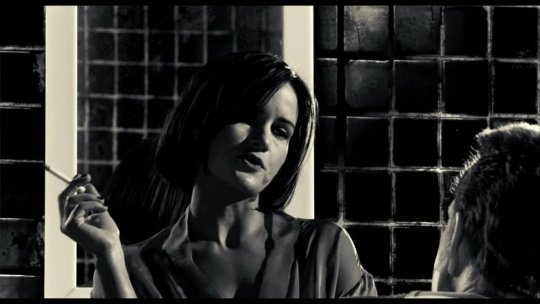
Lucille is played by actress Carla Gugino. Her being played by a straight actress is a discussion for another day. Like the other women of the film, she never appears to have a complete set of clothes. She is topless in a lot of her scenes, and in one is covered by a white button down. She is considered a femme lesbian: “the object of the butch and masculine gaze” (Celestino). Marv isn’t shy to comment to her looks and objectifying her. Marv even notes, “She’s a dyke, but God knows why. With that body of hers she could have any mans she wants” (Sin City). This statement is problematic because it implies that lesbians can’t be beautiful and settle for women because they can’t get a man. Beautiful women just has to date a man, huh?
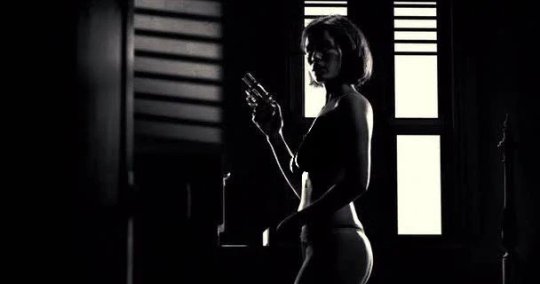
Lucille, along with Miho, had a lot of potential. She is Marv’s parole officer and could have been a good representation for a strong and brave female authority figure who HAPPENS to be a lesbian. However, she is debased to a great set of boobs and the audience to ooze over. Maybe the fact that she is a lesbian makes her sort of a tease? Her character isn’t that significant in the grand scale and could have been a lot better if the creators put more work into her.

Laura Woodhouse writes whilst reviewing the film, “The only time we see policewoman Lucille’s girlfriend is when we see the extra pair of breasts in her bed: the only knowledge we have, and indeed need to have of her is that she has nice breasts. But then again, why else would a beautiful woman want to be a lesbian when there are so many good men around if it wasn’t for that extra pair of breasts to enjoy?” (Woodhouse). The lady who played her is an unknown actress. Upon researching, I found out her name is Claire. Her scene only shows up in the director’s cut. They really felt that Claire as a person wasn’t important but her boobs were (as it made the final cut). Lesbianism in this case is defined as white, pretty, feminine, and young. She appears straight and is assumed until said otherwise. Jennifer A. Hamilton Hart notes in her article, “Sexuality and Popular Culture”, “A lesbian character is an entity marked by sexuality, regardless or not she behaves in a sexual manner” (Hart). Lucille is still viewed as a sexual object despite not being attracted to men. Her body and physical image is masquerading as a heterosexual woman.
Celestino, Chryssa, et al. “Why We Don't Talk About the Lipstick Lesbian.” Preen.ph, 25 Dec. 2015, preen.ph/8718/why-we-dont-talk-about-the-lipstick-lesbian.
Hamilton Hart, Jennifer A. Sexuality and Popular Culture: Conflict and 0RW1S34RfeSDcfkexd09rT2Queer1RW1S34RfeSDcfkexd09rT2-Ies Surrounding Lesbian ‘representation’, Acadia University (Canada), Ann Arbor, 2007. ProQuest, https://libproxy.csun.edu/login?url=https://www-proquest-com.libproxy.csun.edu/dissertations-theses/sexuality-popular-culture-conflict-i-queer-ies/docview/304717393/se-2?accountid=7285.
Woodhouse, Laura, et al. “Sin City.” Word, 18 June 2005, thefword.org.uk/2005/06/sin_city/.
0 notes
Text
Hollywood Lesbians
Les-bi honest. I know, you’re tired of that same pun when it comes to lesbians. For an opening statement on Lucille and how her character was framed in the film, I am going to be exploring lesbians in Hollywood. From my personal experience, Hollywood defines lesbians as either a femme or looking like Ellen. There is no in between. I wonder if Hollywood does it on purpose to remind men that they are lesbians.

Femme lesbians are eroticized and sexualized. They represent a fantasy image; an unattainable conquest for the straight male. Danielle Kerr defines a femme, or lipstick lesbian, as “The label lipstick or femme was used to describe a lesbian that fit the heteronormative ideal of femininity by dressing in all women’s clothing, wearing high heel shoes, carrying a purse, wearing feminine hairstyles, and typically wearing makeup. She is most often referenced as a lesbian that can “pass” in and out of the heterosexual population without her homosexual orientation being noticed” (Kerr). With this in mind, the femme lesbian becomes an erotic image. Lesbian porn, for example, is catered to the heterosexual male. Straight girls pose as lipstick lesbians and perform acts that are titilliating for their audience. Those who want to view lesbians that don’t fit this mold have to go into the niche market. This carries a lot of stereotypes for the femme as they are either “confused”, “going through a phase”, “haven’t met the right guy”, or lying about their sexuality. Society feels that if a girl is gorgeous and looks “straight”, she should behave that way.
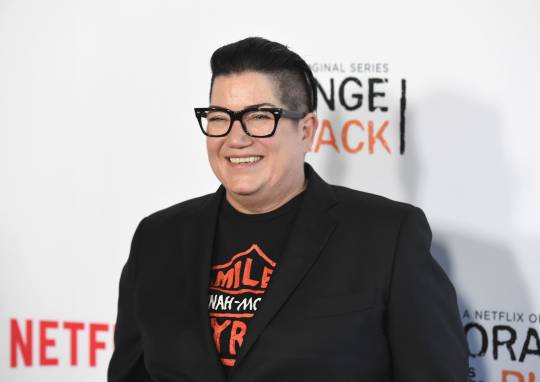
Butch or stud lesbians is what society and Hollywood views as a lesbian. A woman that disguises herself as a man. She is one of the guys, essentially. A desexed image of a woman. The most famous and notable example is Ellen Degeneres. Ellen is not viewed as a sex symbol. For my Queering the Screen class, I watched a film called The Watermelon Woman. It tells the story of Cheryl (played by Cheryl Dunye) going through historical archives to find a Black silent film actress credited as the Watermelon Woman. Dunye fits the mold of a stud lesbian and she gets a sex scene with her girlfriend, Faye. A girl from my class raved and noted that this is the first time she seen a stud sex scene and it was extremely beautiful. Because Dunye was the director, she created this captivating scene framing her a sexual being. She is reclaiming her sexuality. Hollywood provides us these manufactured image of femme lesbians for the male gaze, but don’t provide visibility for the other spectrums of lesbians. I have seen videos on teenage heartthrobs that turned gay but I haven’t seen the other way around. My sister even mentioned that she wonders if there is ever a case when a lady that is considered a bombshell turns out to be a lesbian. To Hollywood, if you don’t fit their standard of beauty, you aren’t attractive. The industry only shows recognition to the stud lesbians that are desexed by their sexual orientation and heterosexual women portraying lipstick lesbians. By only providing two areas of the spectrum for representation, it marginalizes and gives stereotypical images for lesbians. We don’t see those that fit in between like soft studs or stems.
Kerr, Danielle, "Butch, Femme, Dyke, Or Lipstick, Aren't All Lesbians The Same?: An Exploration Of Labels And "Looks" Among Lesbians In The U.S. South" (2013). Electronic Theses and Dissertations. 1153. https://egrove.olemiss.edu/etd/1153
0 notes
Text
Women in Action films
For more context, I am going to be talking about a few characteristics that occur with female characters in action films. I did a simple google search and this is a picture that came up for me.
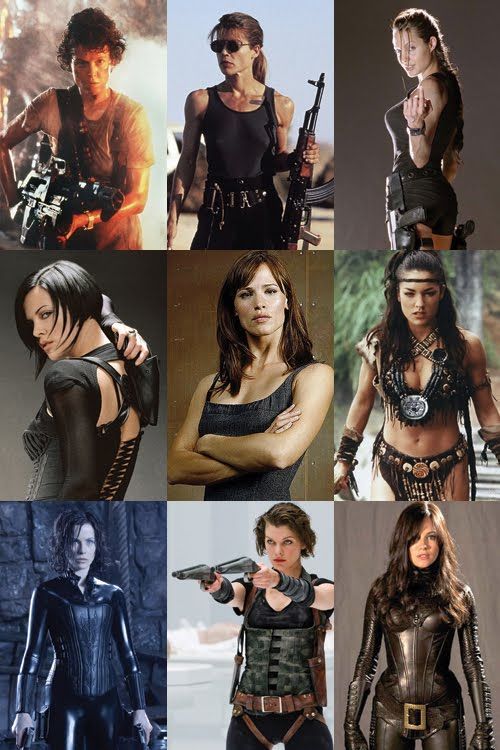
We got Angelina Jolie as Lara Croft, Milla Jovovich as Alice, Aeon Flux, Kate Beckingsale in Underworld, Jennifer Garner from Alias, etc. These characters have similar characterstics of Gail and Miho. They are tough, self sufficient women with tight clothing and sexualized outfits. Females in action films reflect the ideal of a sexualized image of woman existing for the male gaze. On the other side of the spectrum, I think that they are strong representations of women. Yes, they are wearing sexy outfits, but they are strong and can hold her own in a fight. In the case of Tomb Raider, Underworld, Resident Evil, Alias, etc., it is a female protagonist and it is her own story being told, at her own agency. Unlike a lot of other feminists, I don’t have a problem with female sexuality. I don’t mind seeing a sexualized woman as long as that is not their only purpose. I think women should be tough and look good. Men get that privilege, why can’t women?

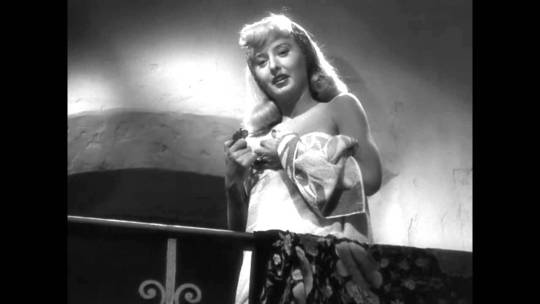
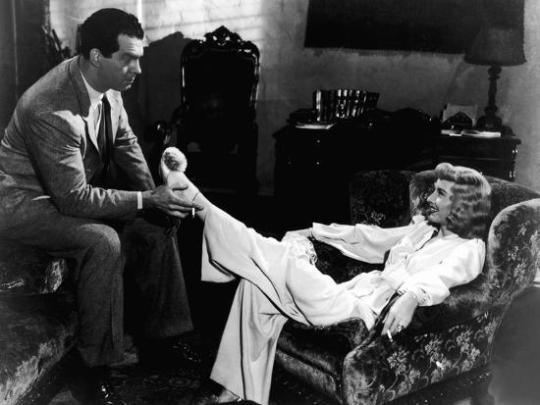
We can’t talk about film noir without mentioning the most iconic film noir film, Double Indemnity. I watched it this year as well, after seeing a clip shown in class. Phyllis, the female protagonist, is the epitome of the femme fatale trope. Perhaps she honed the term. She is cunning, she is attractive, she is dark and tempting. I especially liked her character as I like femme fatale strong women characters. Even though she isn’t threatening like the women in Sin City, it makes her that much dangerous. Her charms are deadly and is ruthless in getting what she wants. She can manipulate anyone.

Back to the topic of Sin City, there is only one female character that doesn’t fit the mold of the action film girl/film noir girl. She is featured second from right. Laura Woodhouse writes, “As an equal member of a powerful male group she transcends the passive female stereotype prevalent throughout the film and is thus able to escape objectification” (Woodhouse). A relative unknown character, she is remained nameless and blends in with her fellow vigilante comrades. However, I think that this character fits in her group and there is no question of her sex and she is at the same level of her male counterparts.
Woodhouse, Laura, et al. “Sin City.” Word, 18 June 2005, thefword.org.uk/2005/06/sin_city/.
7 notes
·
View notes
Text
Sin City Bombshells
For this post, I am going to be analyzing the following female characters: Nancy, Wendy, Gail, Miho, and Shellie. I am going to be going in depth about Lucille in another post, when I discuss lesbians. I know it’s a lot, but each of these characters represent a different spectrum of female sexuality, and to a certain extent, objectification. Most of the significant female characters are in the sex industry, as prostitutes or strippers, respectively.


First, we have Nancy Callahan, played by Jessica Alba. Her story is brought by Bruce Willis’ character, John Hartigan, saving her when she was a child from a child predator. They part for several years and meet again in the future when Hartigan gets out of jail. He sees her as a 19 year old working as a stripper. She tells him that she never stopped thinking about him and has fallen in love with him. It is implied that they start dating afterwards. I don’t mind an age gap in relationships but this one rubbed me the wrong way. Hartigan met her as an 11 year old and he was grown. Now that she is older, she is viewed as a sexual object. I think that this represents the barely legal fetish that a lot of men carry. Along with this, Nancy is the perfect example of the stereotypical image of a stripper. She is a young woman (college age, fresh out of high school) with a heavy baggage of childhood trauma mixed with potential daddy issues. I think she fell in love with Hartigan because he saved her as her lowest. A savior, of sorts. I expected her to have a bigger role in the story because she is a huge name and is even on the cover. She only appears for a small bit and was only accompanied by Hartigan. She is constantly sexualized by her now stripper job and her kidnapping. I think it would have been a cool idea if Hartigan and her teamed up, like a Batman and Robin situation. Her role as a film noir trope is the “The good-bad girl stands in between the girl-next-door and the femme fatale, which highlights her moral ambiguity” (Barroso). Nancy has an innocent image (as we remember her from the beginning of the movie as a child), however, is now grown and had a darker moral code. Her becoming a sex worker also ruptures her moral ambiguity. Some still believe that being involved in the sex industry is immoral and evil.

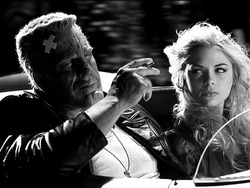
Next is Wendy. She is played by Jamie King. Wendy is the twin sister of Goldie, Marv’s prostitute lover. The reason she is given that name is the striking image of her soft golden billowing hair. Goldie was killed, hence Marv (Mickey Rourke) going on the hunt to find her killer. He blames himself for her murder and goes on a revenge spree to avenge her as he couldn’t save her previously. Since the beginning, she is framed in a sexual lens. She is described as an angel sent from heaven. She is naked the second the audience sees her in a passionate lovemaking scene. She is enveloped in light. Dana Leventhal observes, “The men idealize, romanticize, pine for the women by placing them on impossible pedestals (circumscribed by sexuality and desire) as cherished imaginings and visions, and through this possession make it their duty to guard and safekeeping them, especially since the women are jeopardized or victimized by brutal crime and injustice” (Leventhal). He finds out that Goldie has a twin, Wendy. Wendy is hardened and dead set on revenge, as she should be. She is a no nonsense type of woman. Wendy is tough and willing to bring the murderers to justice. She is still sexualized, nonetheless, as Marv always compared her to her sister, and viewed her the same way. Donaldson writes, “The women of classic noir are often alluring, moral ambiguous, and two steps ahead of the men in the story” (Donaldson). Wendy is alluring, as she starkly resembles her prostitute twin sister. She is morally ambiguous as she is dark and calculating, yet she joins Marv (the anti-hero) on avenging the wrongful murder of her sister. Wendy is one of my favorite characters as I liked how merciless she was.

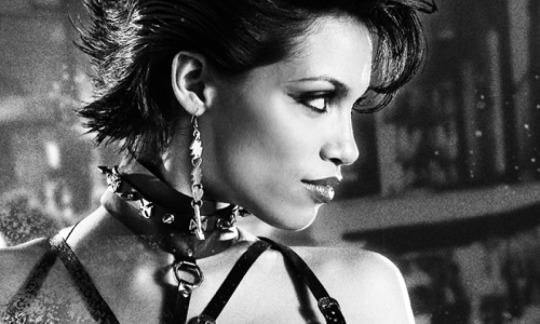
Gail, played by Rosario Dawson, serves as one of two women of color characters. That is a discussion for another day, as I am going to be analyzing her character. She is the femme fatale. Barroso defines the trope as, “The femme fatale...is mysterious and seductive, known for using her charms to ensnare men and get them into dangerous, and most often, deadly situations. Her main characteristic is using her feminine sexual traits as a way to achieve hidden purposes” (Barroso). She is tough and isn’t going down without a fight. She is the epitome of female empowerment in the eyes of men: tough and battle ready, and looks good doing it. From the picture alone, she is scantily clad. She looks great and I like her outfit but I know the reason why she is dressed like this. She is cunning and commanding. She resembles and reminds me of a dominatrix. Sexually dangerous and isn’t afraid to beat down men. She has masculine traits like being the leader of the gang and she is gritty and domineering. She kills men in a severely violent manner and is strong and self sufficient.


I freaking love Miho. She is, by far, my favorite character in the film. The movies that Devon Aoki appears in, her characters always reign supreme. There is a reason Suki from 2 Fast 2 Furious is still so popular and raved about. However, there is something I hated about her character. She didn't say a word. Her character is the epitome of age old Asian stereotypes: the silent ninja. Miho would strike her sword on her opponents in the same “badass” manner as a ninja would. Her character had so much potential and I feel like it was a waste to have her be silent the entire time. Both her and Gail are the tough girls in the film. Leventhal writes, “The women are not helpless, powerless, or weak; rather, they are cunning and battle-ready. Not only do they refrain from asking for help from the male protagonists, but they either resist or fight to save themselves from their enemies” (Leventhal). Miho is presented differently from the other girls of the film. Her, along with Gail, are not the average damsel in distress, which I like. Laura Woodhouse rants, “Miho...initially appears to be the only truly powerful woman in Sin City. She is not possessed by a man, she is not a victim, she is certainly not physically passive as she goes on to kill many more men and can easily win a fight with any man...It is almost as though Miho is a different creature, a member of a race of silent killers that exist only to perform acts of violence. Quite simply, she cannot be presented as a ‘normal’ female because she has superior killing skills to a man and this threatens the patriarchal nature of Sin City. The creators of Sin City rob Miho of a voice in order to justify her power” (”The F Word”).

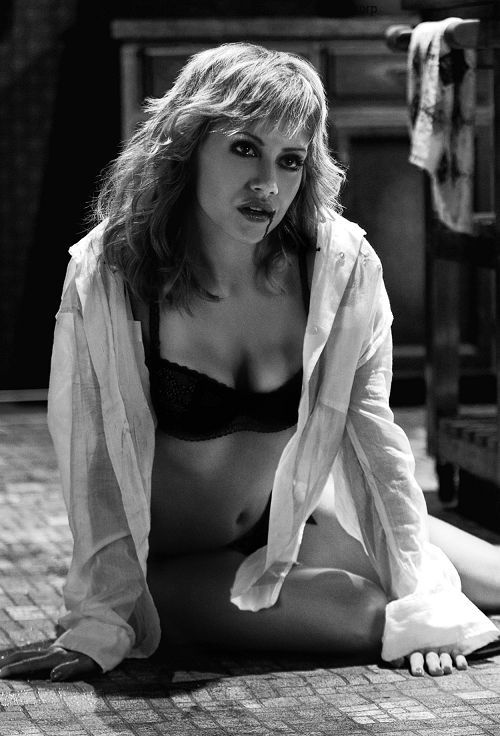
Last, but not least, there is Shellie. Played by the late Brittany Murphy, she is a prostitute. Her costume in her major story arc is a black underwear set with a white oversized button down shirt. Given that she was in her own home and she is allowed to wear what she wants, but it rectifies the stereotype that women walk around their home scantily clad, sexually available for overnight guests. Along with that, it fits her day job of being eyed on by the voyeuristic audience. Shellie is conceived as the victim character; she needs the help of her boyfriend to save her from her deranged pimp of a boss. Leventhal notes, “the traditional formulations or projections of femininity as sexuality are retained, as are the concomitant age-old misogynistic conceits of male domination/paternalism in the guise of safety and defense of women, i.e., the cliche that women are weak and need rescuing by men from other men” (Leventhal). Shellie mirrors the poor princess locked up in a tower, needing her Prince Charming to come and save her.
Barroso, Malu, et al. “The Representation of Women in Film Noir.” High On Films, 10 Oct. 2019, www.highonfilms.com/women-in-film-noir/.
Donaldson, Kayleigh. “Problematic Faves: Sin City.” SYFY WIRE, SYFY WIRE, 24 Apr. 2020, www.syfy.com/syfywire/problematic-faves-sin-city.
Leventhal, Dana. “Superwomen? The Bad-Ass Babes of Sin City – or Are They?” Bright Lights Film Journal, 28 Apr. 2019, brightlightsfilm.com/superwomen-bad-ass-babes-sin-city/.
Woodhouse, Laura, et al. “Sin City.” Word, 18 June 2005, thefword.org.uk/2005/06/sin_city/.
7 notes
·
View notes
Text
Sin City: An Analysis

For my next few posts, I am going to be talking about the movie Sin City. Sin City is “a 2005 American neo-noir crime anthology film produced and directed by Frank Miller and Robert Rodriguez” (Wikipedia). I watched it for the first time a few months ago; it was on my bucket list of films to watch. Aesthetically, I loved it. I thought it was an interesting take on the modernized film noir genre. It took the action genre and turned it on its head by using the darker aesthetics of film noir. I also enjoyed the pop of color interspersed for a nice contrast with the black and white. I also enjoyed the style of the film too. It featured three major stories: a vigilante (played by Mickey Rourke) wreaking havoc on trying to find his lost love; a cop (played by Bruce Willis) tracking down a child predator; and an ex-prostitute (played by Brittany Murphy) and her story on evading her old pimp with the help of her new boyfriend. Even though I loved the film, I am going to be discussing what a lot of feminist critics disliked about the film. How the film framed and presented women is how a typical male sees a woman: a beautiful woman oozing with desire. She exists as a plot point for the male, whether that be as a desire/affectionate partner or viewed based on her beauty. Kayleigh Donaldson writes for Syfy, “every female character is a hyper-sexualized sex worker defined entirely by their sexuality” (Donaldson). Observing a stylized masculine text, Sin City affirms the idea of femme lesbians, or lesbians that have the image of heteronormative beauty standards, as an unattainable and eroticized sexual conquest. For the sake of the class, I am going to be looking at this through a feminist and queer lens. The characters I am going to be focusing on primarily include: the two male protagonists (Rourke and WIllis, respectively), and the female sex workers (Gail, Miho, Wendy, Nancy, and Shellie) and Marv’s parole officer, Lucille. I am going to be referencing articles and reviews based on the movie, along with critical analysis on the lesbian label and how they are represented in society, with a sub-argument on female representation in the action film genre. Judith Butler’s Gender Trouble will be used to express the feminine identity in a feminist viewpoint.
Donaldson, Kayleigh. “Problematic Faves: Sin City.” SYFY WIRE, SYFY WIRE, 24 Apr. 2020, www.syfy.com/syfywire/problematic-faves-sin-city.
1 note
·
View note
Text
Queer Eye
The show, “Queer Eye for the Straight Guy” and its reboot “Queer Eye” takes 5 males who are experts in their field helping those with lifestyle advice. It provides the juxtaposition of a masculine advice with a feminine attitude. The males on the show take “feminized” jobs such as culinary, interior design, and fashion styles as a way to exploit their talents to help a straight male impress his girlfriend. The males give their subject a makeover (another typically feminine job) and work their magic to help the poor suffering male. I’ve never seen the show, but I do like how the males on the show are providing a means for gay male representation in the media. However, I feel like the premise of the show allows for more stereotypical images as well. Most of the men give me “gay best friend” vibes (I could be wrong because I’ve never seen the show). Of course, there is nothing wrong with that. I fear that straight people could possibly debase what they see on the show and assume that all gay men behave the same. All of the “Fab Five” are gay males. In the chapter, “The Gay Absence”, the author writes, “a woman’s soul in a man’s body. That makes gay men a freakish instance of gender misassignments” (16). To reference the above, the careers that the Fab Five take on are stereotypically and culturally feminine: food and wine expert, interior designer, groomer, fashion designer and culture expert. These men break the cultural norms but they do it with style.
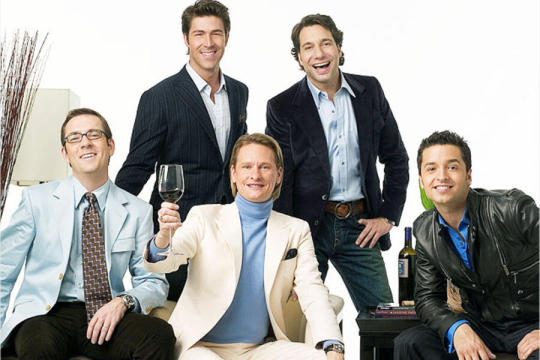
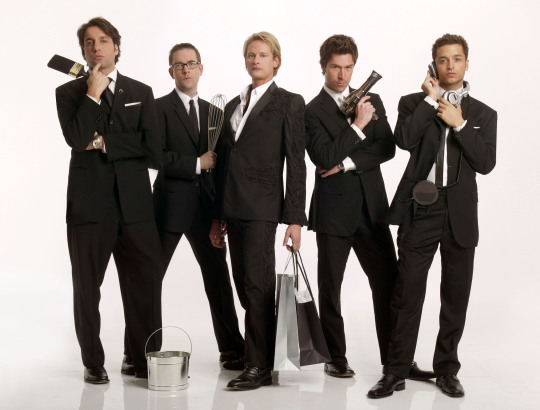

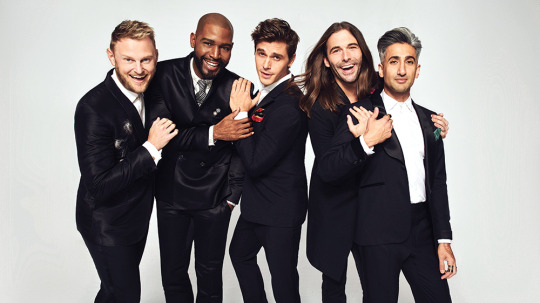

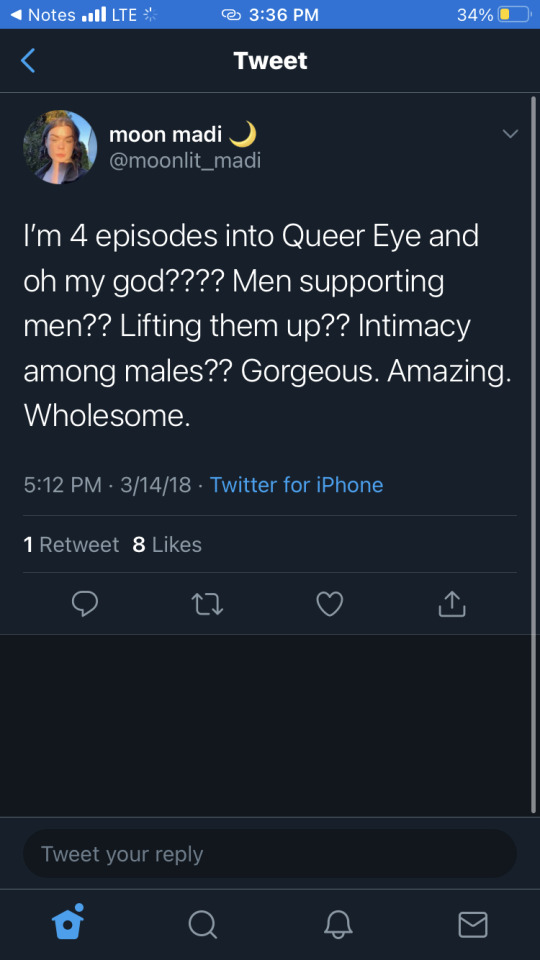
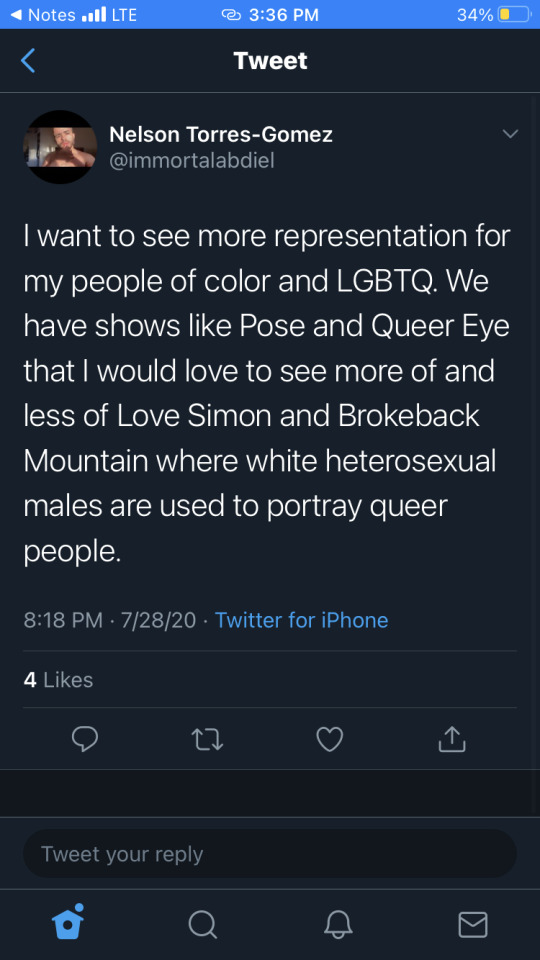
0 notes
Text
The Nature of the Theater Gay
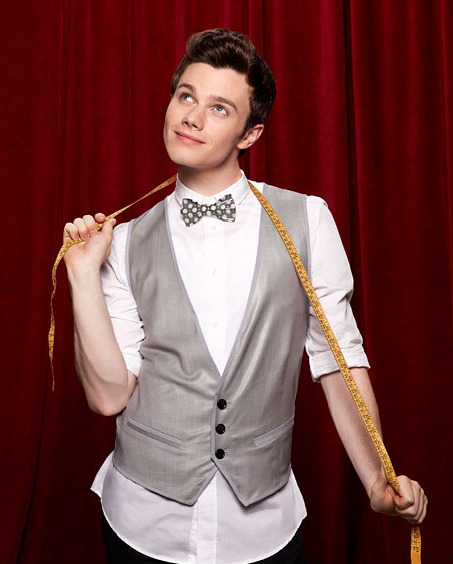
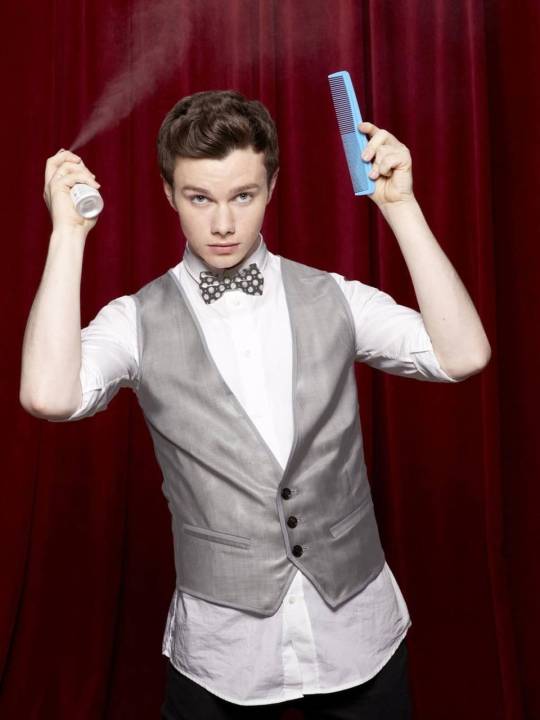
Ahh, Glee. The show is so cringey, yet it is beautiful. It is so bad that it is so good. The element of trashy camp makes the show. For this post, I am going to be talking about Glee’s most famous gay character, Kurt Hummel. Kurt is what I was refer to as a theater and musical gay. He is a huge broadway fan as he sings show tunes on almost every solo song he sings. He is also a fan of divas that have transformed into gay icons such as Lady Gaga and Beyonce. Kurt would always hang out with the females in the club such as Rachel, Mercedes, and Tina. He would always feel awkward around the males because their versions of masculinities are contrastingly different. G.M. Herek writes in his article, “On Heterosexual Masculinity”, “the social shift from traditional to modern male roles” (Herek). Kurt helps the football team to a victory by “queering” the game. In order for him to shoot the winning shot, he needs to do the dance to Beyonce’s “Single Ladies”. By providing this helpful tool, and the other times the football players used dance to win a goal, it provides a juxtaposition between masculinity and femininity. Men are often afraid to let out their feminine side, but Kurt has no problem with it. Kurt is played by Chris Colfer, who identifies as gay.
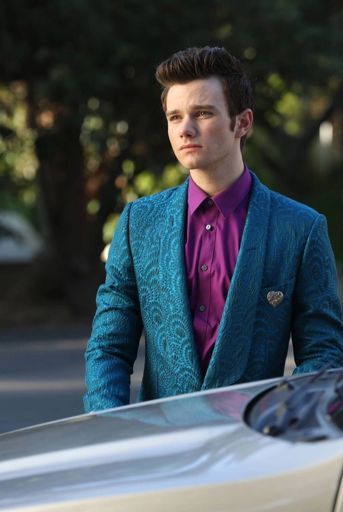


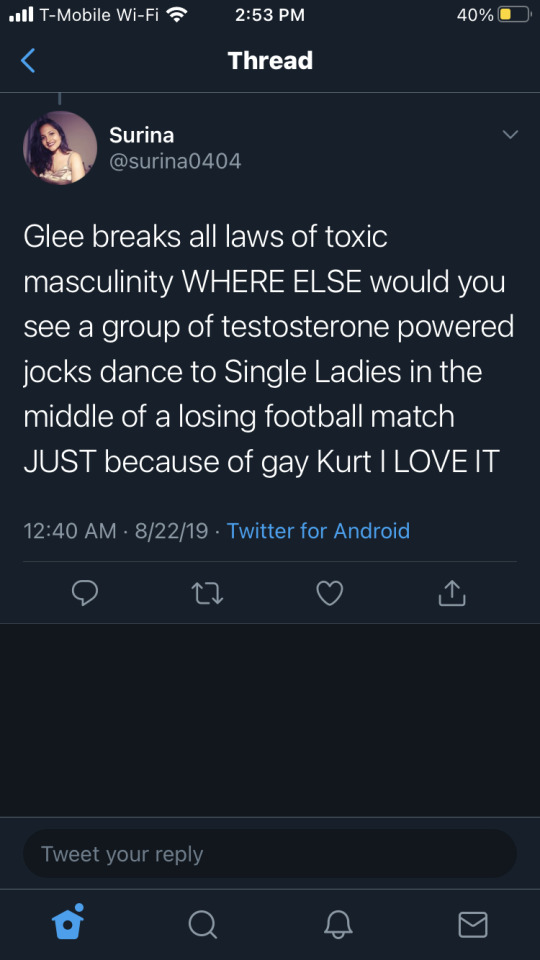
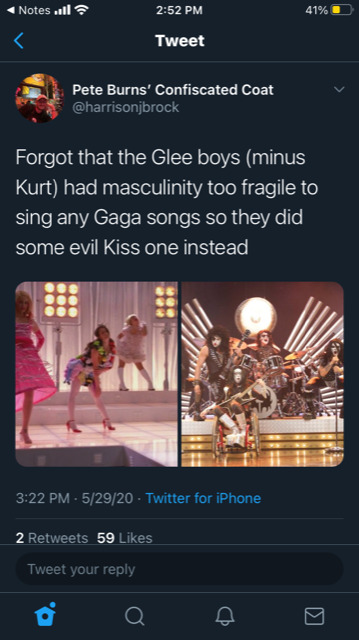
2 notes
·
View notes
Text
The Category Is...
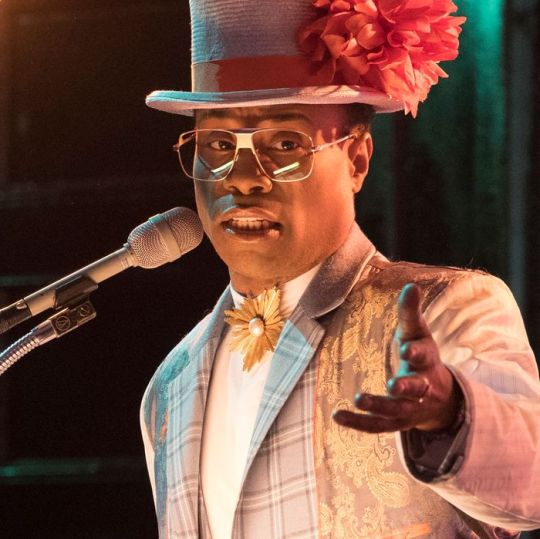
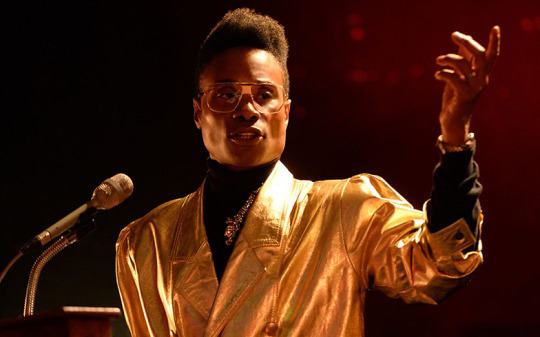

I am actually late to the Pose train. I was assigned to watch the first episode for my Queer Pop Culture class this semester. I loved it so much that I binge watched the rest of the series. Me fangirling about Pose will take all day, so for now I would like to highlight one of my favorite characters, Pray Tell. He is played by the eccentric, Billy Porter. He is the emcee of the balls, a culture that revolves around the story of Pose. In order to emcee, you need to be energetic, witty and a hype man. Pray Tell is all of the three and more. He is sassy, wise, and an overall complex character. Something I love about Pose is the hiring of queer characters. It has the highest amount of transgender actors in a show! I find that so beautiful. But anyways, Billy Porter is actually gay so it adds to the organic feeling of the show. It is amazing to see a black unconventional gay male gets the spotlight in an alluring way. Although Pray Tell does have a bit of stereotypical gay male attitudes such as his sassiness, he is so much more than that. He is an amazing friend; he is enlightened by his own experiences and passes on that knowledge to the “children” in the House of Evangelistas. We are able to see Pray Tell in his most broken state and he rises above it like a warrior.
POTENTIAL SPOILER ALERT:
In season 2, the girls of the ball were upset that the judges of the ball were predominantly cis gay males. They were annoyed that the judges were judging them on their realness and harshly critiquing them if their heels are below 6 inches. As a challenge, Electra, Lulu, Angel, and Bianca told the judges plus Pray Tell that they had to take a walk in their stilettos: dress up as women, walk the runway, and get judged by the girls. Pray Tell, who is already very flamboyant in his colorful fashions, was hesitant and uncomfortable to get into his feminine side. I think this was a nice touch to the show because I feel like a lot of straight people would feel like he would have no problem dressing up because he is gay. This show combats a lot of baseless stereotypes. Todd Migliaccio writes in his article, “Men’s Friendships: Performances of Masculinity”, writes, “...a performance of masculinity...influenced by gendered expectations” (Migliaccio 226). Because of how harsh Pray Tell’s dad treated him as a child, it was hard for him to get in touch with his feminine side. To Pray Tell, he had to hide his true spirit because of how dejected he felt during his childhood. In the end (through hard work) he was able to let his inner diva shine.
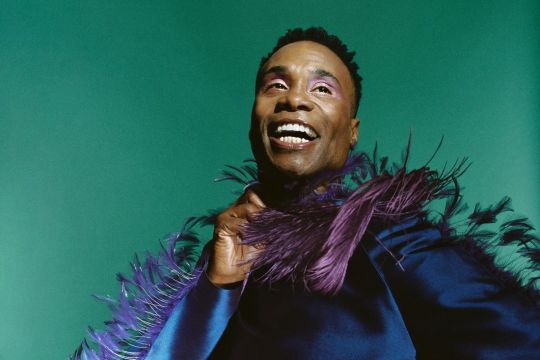


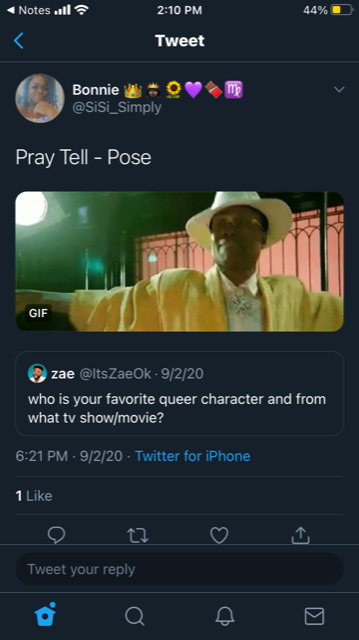

0 notes
Text
Week 7: A Lesbian Superhero

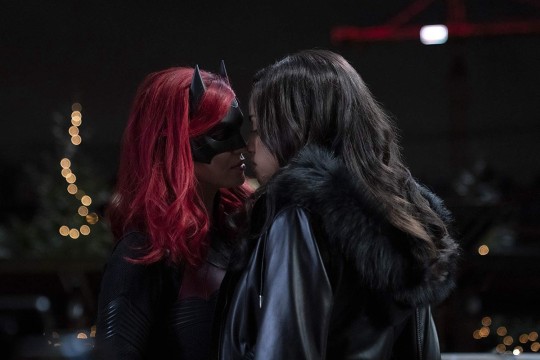
Everyone has heard of Batman. But what about Batwoman? Batwoman is an alias for Katherine Kane. Batwoman is notable for being one of the first, if not one of the only few lesbian superheroes. Taking a quote from Chris Straayer’s article, “The She-Man: Postmodern Bi-Sexed Performance in Film and Video”, he writes, “the feminine costume utilizes conventions...to actually deliver its referent” (Straayer 2). Even though Kane is a lesbian, her costume provides a masculine and feminine binary. It is a black armor with deep cuts which highlights the masculinity. However, her striking red hair and red lipstick defines her femininity and codes her a female superhero. She is powerful just like Batman. Her strong and powerful nature demonstrates her “masculine” image.
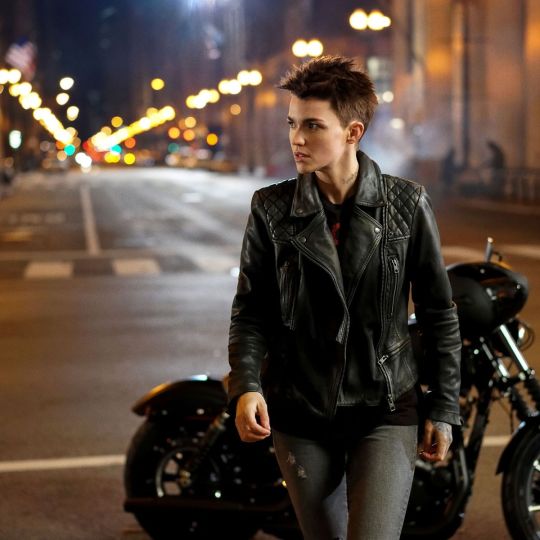
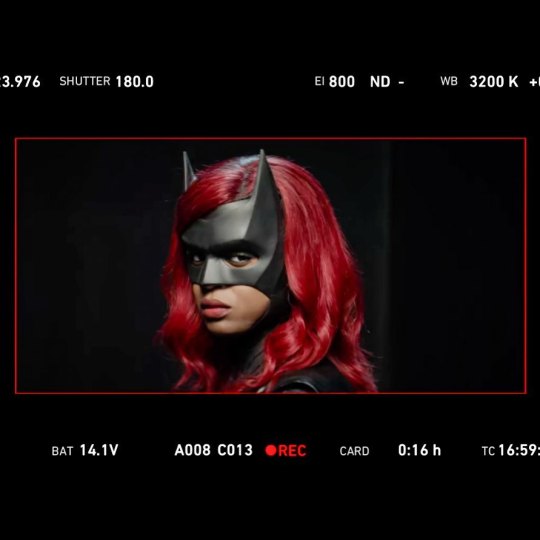
In 2019, the CW created a superhero drama about the character. The originating actress for the role was Ruby Rose. She is known for being an androgynous queer beauty that plays with the idea of gender. Even though Rose is a lesbian, her casting was considered controversial because she is gender fluid. Ruby Rose left the first season and they hired Javicia Leslie, an African American bisexual female. It is currently in production
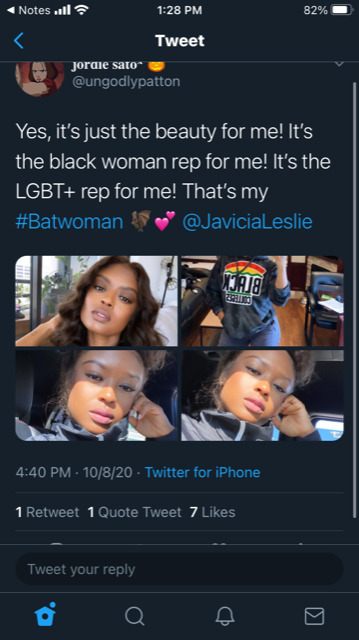
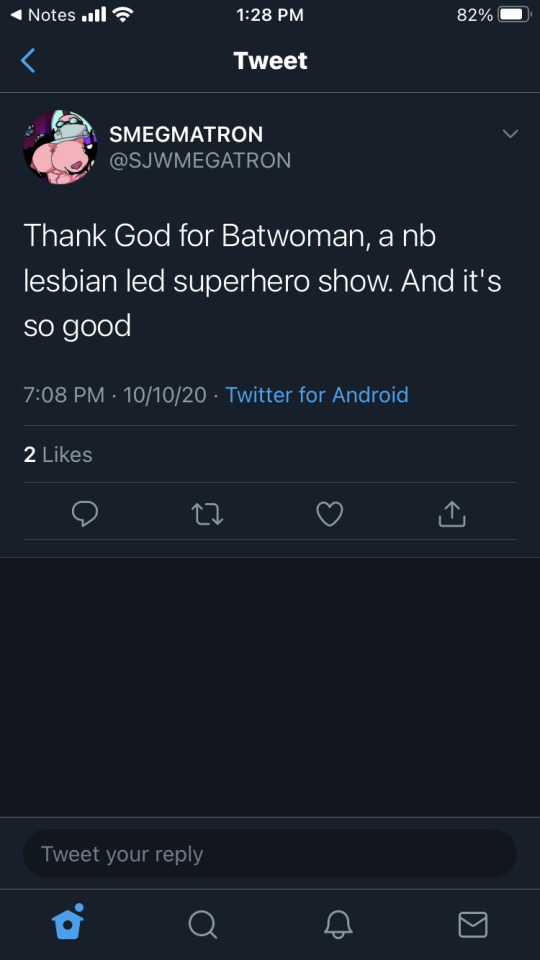
0 notes
Text
Week 7: Jules, a glitter angel sent from heaven




I am one of those people who fell in love with Euphoria. It is easily one of my favorite shows. I became obsessed upon watching it and now eagerly awaiting for the next season. Until then, I will sit here and fangirl over one of my favorite characters: Jules. Jules is the epitome of magical rainbows and unicorns aesthetic. I love her pastel fashions and glittered eyes. However, what makes Jules different from other main female protagonists is her being transgender. Both her and the actress are. What I like about Euphoria is the naturalness of it all. She is so unapologetic herself and no one dares question it. I love how they also showed us her life story and how she isn’t one of the queer characters that use their sexuality as a victim code. Jules is presented as who she is: a woman. Of course, it is not my place to say because I am not a transgender woman but I believe that she is a positive representation for the transgender community. She passes the Vito Russo test. She is the best friend of Rue, who is played by the amazing Zendaya. The show never explicitly states Jules’ sexuality but she had intimate relationships with both men and women. High school is one of those eras where people try to explore their sexuality and figure out who they are. At one point, Jules and Rue begin to have loving feelings for each other. I love how Rue still gets feelings for Jules without her status being an issue. It is a stark contrast to a movie I watched for my class called “The Crying Game” where the main character threw up after seeing his woman’s penis. Transphobia was considered acceptable for the longest time so it’s nice to see there isn’t a lot in this show. Taking a quote from Elisabeth Sheff’s essay, “Polyamorous Women, Sexual Subjectivity and Power” she writes, “a woman is neither the product of her circumstances (a victim) nor the producer of her world (a powerful female), but rather she is both.” (Sheff 255). Euphoria doesn’t shy away from the hardships of Jules’ life but rather uses it as a means of showing who she is. The trauma she faces are displayed as “battle scars”.
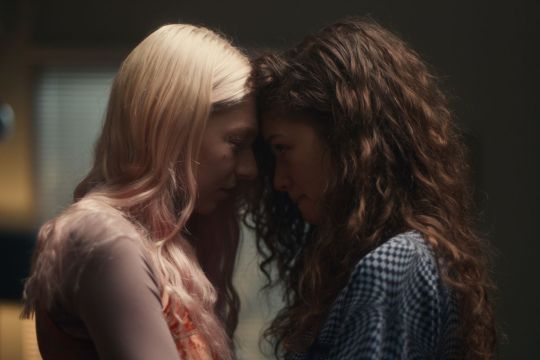

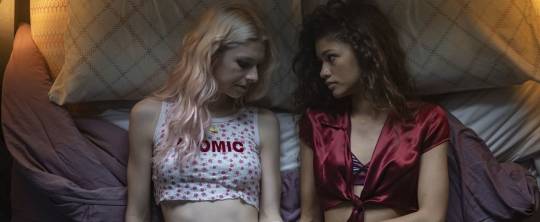
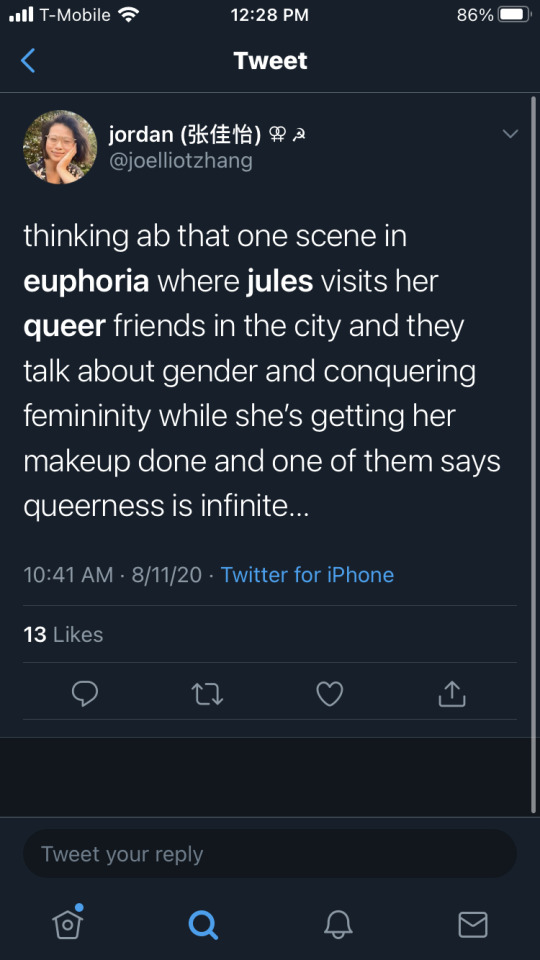

0 notes
Text
Week 7: Jennifer Check: The Girl Who Has Everything
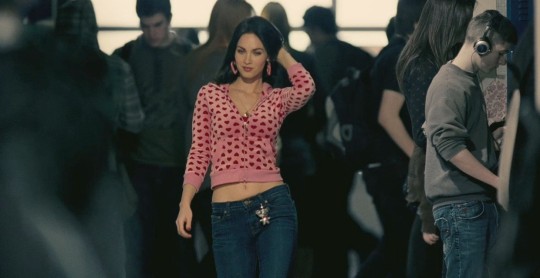




I’m actually so excited to be talking about Jennifer Check! “Jennifer’s Body” is one of those movies that was ahead of its time! I actually watched it for the first time earlier this year and I was immediately drawn to the character of Jennifer (a huge portion being because Megan Fox). Jennifer is the epitome of the characters that I love in early 2000s movies: beautiful, popular and sometimes catty girls. There is a reason a character like Regina George holds the test of time. But that’s a topic for another day. I am going to be talking about the queerness of the film. Like I said, Jennifer is a confident lady. She would feed off of male bodies after she was done with them. I think that this could also be a social commentary on how men treat women. Many have debated this as a feminist film. The queerness about this film, in my opinion, is the campiness and the character’s bisexuality. I think that this movie involves camp because it is taking the idea of a horror film and making it “fun”. A popular girl who’s secret is feeding off male bodies? There is something playful about combining the idea of a horror film to an early 2000s mean girl-esque character. The second point I am going to be talking about her bisexuality. Both the character and the actress identify as bisexual so I feel like it adds to the authenticity. The scene in question is contested by Needy (her best friend played by Amanda Seyfried) and her are having a sleepover (and sharing the same bed). According to Jennifer, they always share the bed. Maybe because Needy has a boyfriend now or she senses Jennifer growing feelings for her but she is reluctant to the idea and demands her to leave the room. After a while, they begin to kiss. This scene not only touches on queerness (whether it be bisexuality or sexual experimenting/awakening), it says a lot of Jennifer’s character. Given as beautiful as she is, along with her status, she can have anyone she wants to. The idea of her kissing her best friend also could show the vulnerability and closeness that they had as friends but she wants to take it to the next level. Or she can just be kissing her because she can. Taking a quote from Elizabeth Sheff’s essay “Polyamorous Women, Sexual Subjectivity and Power”, she writes, “women’s greater control of sexuality...endowed them with increased social power in a potentially highly sexualized setting (Sheff 271). High school (as weird as it is) is a highly sexualized setting. Hormones are off the wall. Jennifer’s confidence allowed her to take the idea of sexuality and pull it by the reigns. Her confidence and beauty allowed her to be the most popular girl in school. She has it all under control.




0 notes
Text
Week 3: Camp Spotlight “Jo Kwon”
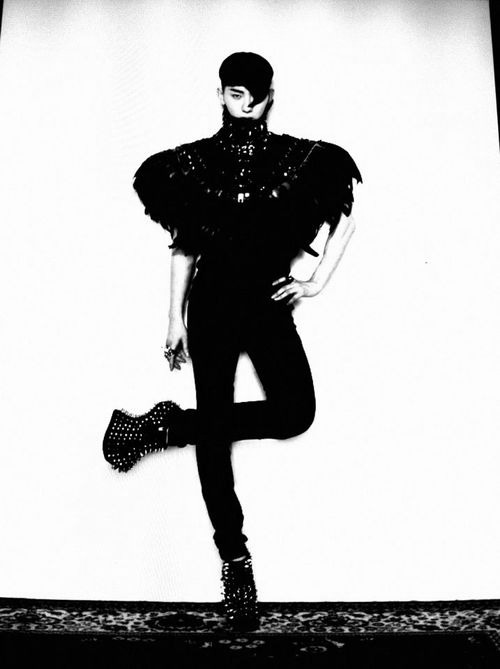

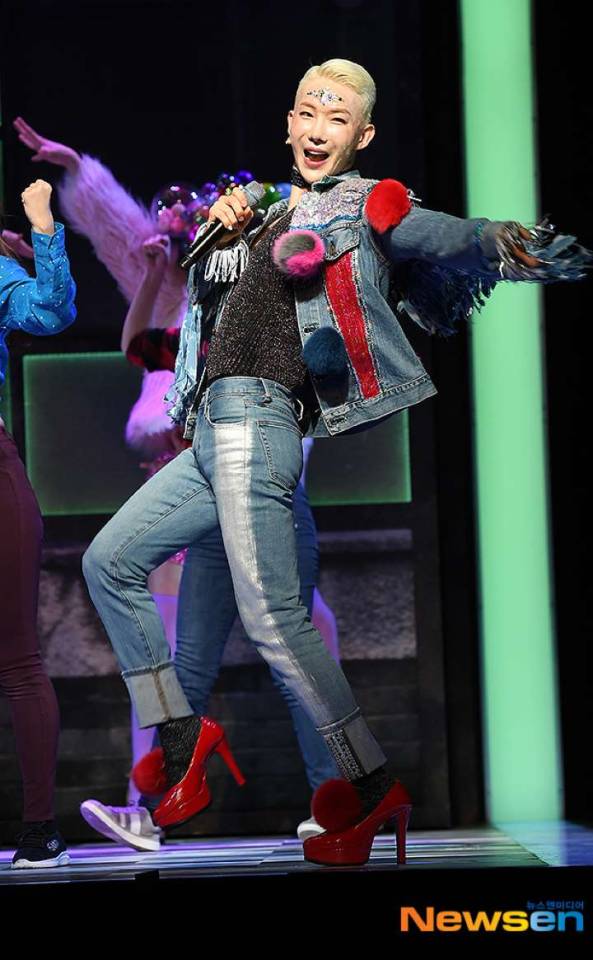
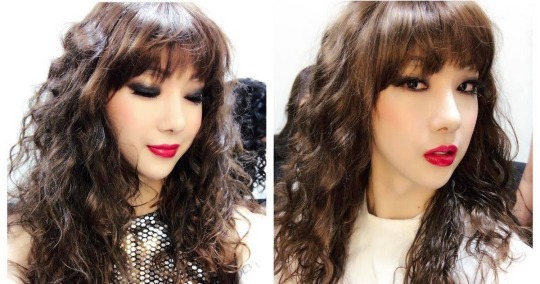
Jo Kwon is a South Korean singer and celebrity. To me, he embodies the idea of camp because he takes the idea of what is considered feminine and plays around it. He unapologetically wears heels in a conservative country. He wears makeup because it makes him feel happy. He parodied Lady Gaga and Beyonce (two other camp icons) in over-the-top and dramatic costumes and let his star power shine through. The most famous camp quote that embodies him is "You can't camp about something you don't take seriously. You're not making fun of it; you're making fun out of it.” (Christopher Isherwood). Everything he does, I feel like, are just fun and expressive creative energy. I also love how he’s breaking boundaries and being himself.



0 notes
Text
Week 3: Divas and Femme Queen Energy
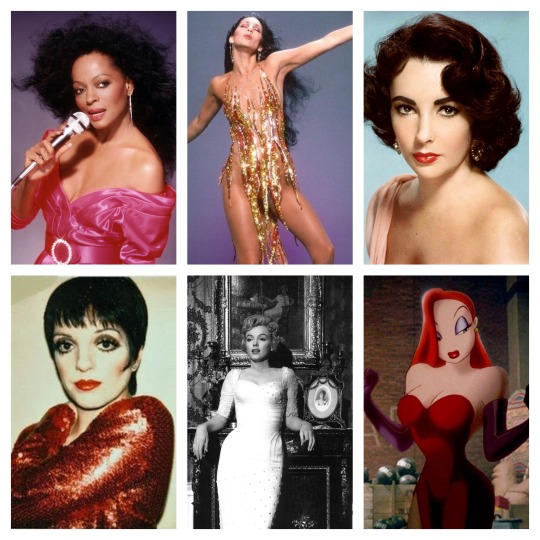
Divas, such as those featured above, are the epitome of glamour feminine energy. Drag queens would often emulate them in order to achieve femme queen realness (I’ve been watching a lot of Pose recently). Chapter 3 titled “Camp: A Queer Sensibility” (I couldn’t find who the author is or where the book originated from) summarizes camp as “ Politicized form of queer parody, pastiche, and performance...Actions and gestures of exaggerated emphasis...An embodied style or manner of conduct” By executing an exaggerated parodied form of Britney Spears for example, they are reinterpreting the means of social construct. Before it wasn’t acceptable for men to dress up as women. So this ideal form of femininity was weaponized as a stylish middle finger. Playing “dress up” can also be thought of taking a mile in someone else’s stiletto heels.
0 notes
Text
(WK 3) The Met Gala: The Most Unapologetically Fashion Looks with the Frameworks of Camp

(from top to bottom: Lana Del Rey, Jared Leto, Emma Roberts, Emily Ratajkowski, Harry Styles, Ezra Miller, Katy Perry, Gemma Chan, Billy Porter, Zendaya, Kacey Musgraves, Lily Collins, Cardi B, Janelle Monae, Michael Urie, SZA)
The Met Gala is one of the most fashion forward events of all time. People across the country look forward to seeing the over-the-top designer attire that challenge the basic glitz and glamour in posh award shows. Their outfits are sophisticated yet whimsical. To the common eye, some of the unique pieces are regarded as “weird” or “odd”. However, I view it as camp. They are taking costume and styling choices. With that, it is constructed it to fit an aesthetic. Susan Sontag writes, “Camp is a certain mode of aestheticism. It is one way of seeing the world as an aesthetic phenomenon. That way, the way of Camp, is not in terms of beauty, but in terms of the degree of artifice, the extreme degree of stylization.” (Sontag, “Notes on Camp”)


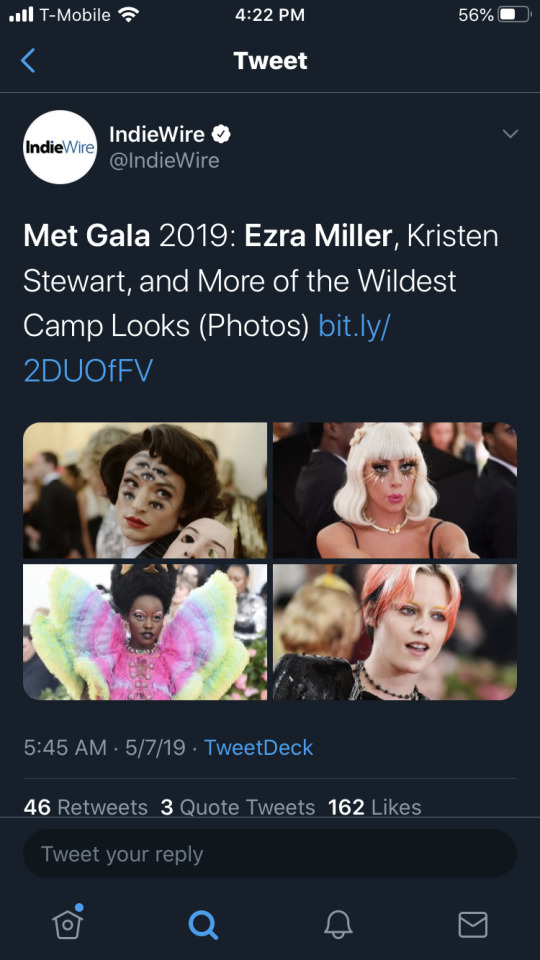
1 note
·
View note